
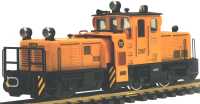
All modifications described herein are done at your own risk !
| Home Garden Railway Digital Conversions |  |
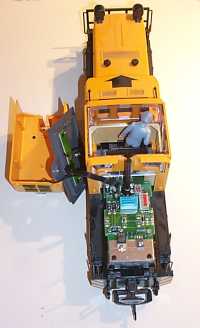 |
I purchased my 20670 in December 1999 and obtained the version which was designed
to accept the LGB decoder. I wanted to install the ZIMO
MX65S into this locomotive. Therefore, I removed the roof of the cab and also the shell covering the motor. (The detailed steps for disassembly are described later on.) |
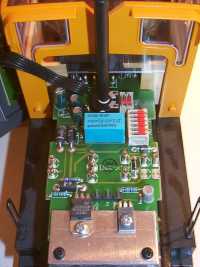 |
I was very happy to find a PCB (printed circuit board) that was almost identical to that in the Brunig steam engine. |
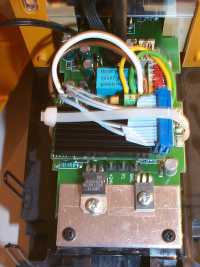 |
I therefore connected the MX65S decoder in the same manner as for the Brunig engine
and fastened it with some cable ties. This initial conversion took only 30 minutes. The instructions for the 20670 state, in the section about multi-train systems, that the cleaning wheels can be turned on and off using the F1 button on the throttle but that the potentiometer (on the roof) provides no speed control and that the motor always runs at full speed. With the covers still removed, I placed the engine on my test track and everything worked as expected. However, I was not satisfied with this type of operation. The cleaning wheels were turning so fast that I was worried about my track. Whenever the engine stopped, the cleaning wheels would continue to spin, and the direction of the cleaning wheels didn't change with the direction of travel either. This is not at all what I expected! |
|
After this initial conversion, it became pretty obvious how I wanted the engine to function:
To meet the above requirements, it quickly became obvious that I needed a second decoder to implement all these features. In my 'parts box', I found an Itelec 5130 decoder. I don't use this decoder for my engines anymore for two reasons. One, the PWM frequency to drive the motor is too low (MS65S 16 kHz!) and the decoder is too large. However, for use in the 20670, this decoder was perfect ! Using some clever programming of the two decoders, I was able to meet all the requirements I had set for myself as listed above. In the next section I will describe in detail this extensive modification of the 20670. |
|
I installed two decoders into this loco: |
You can of course use other decoders as well. However, since both decoders are controlled by the same address, they must be able to support the same number of speed steps (28 in this case, thus Bit 1 in CV29 set to '1'). Furthermore, it is important that the decoders can handle substantial amounts of current.
The following schematic was used as the basis for my conversion:
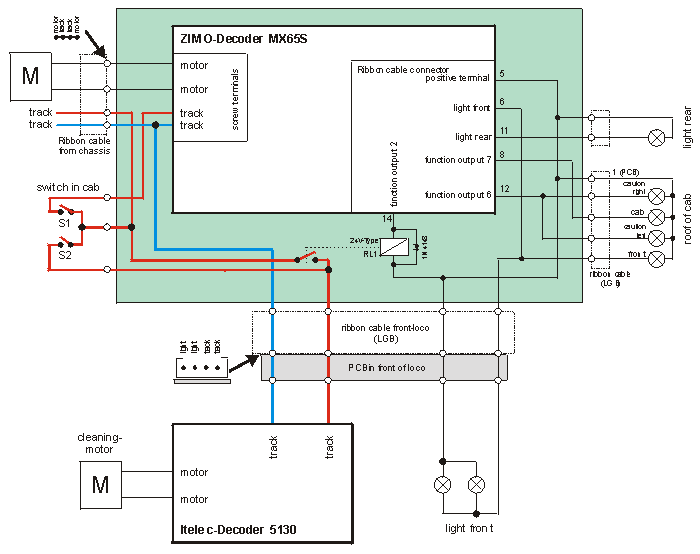
| Schematic as PDF file. |
|
This conversion took the better part of a day and I was really pleased at the end when everything was working as expected. The only annoyance is that the caution lights on the roof are now simply lit when in the cleaning mode, they should be flashing. Maybe later.... ?
I can now control my track cleaning loco using address (20) and activate the cleaning wheels using F1. When I stop the locomotive, the cleaning wheels stop automatically, and I can clean in both directions.
TopTranslated by Knut Schartmann